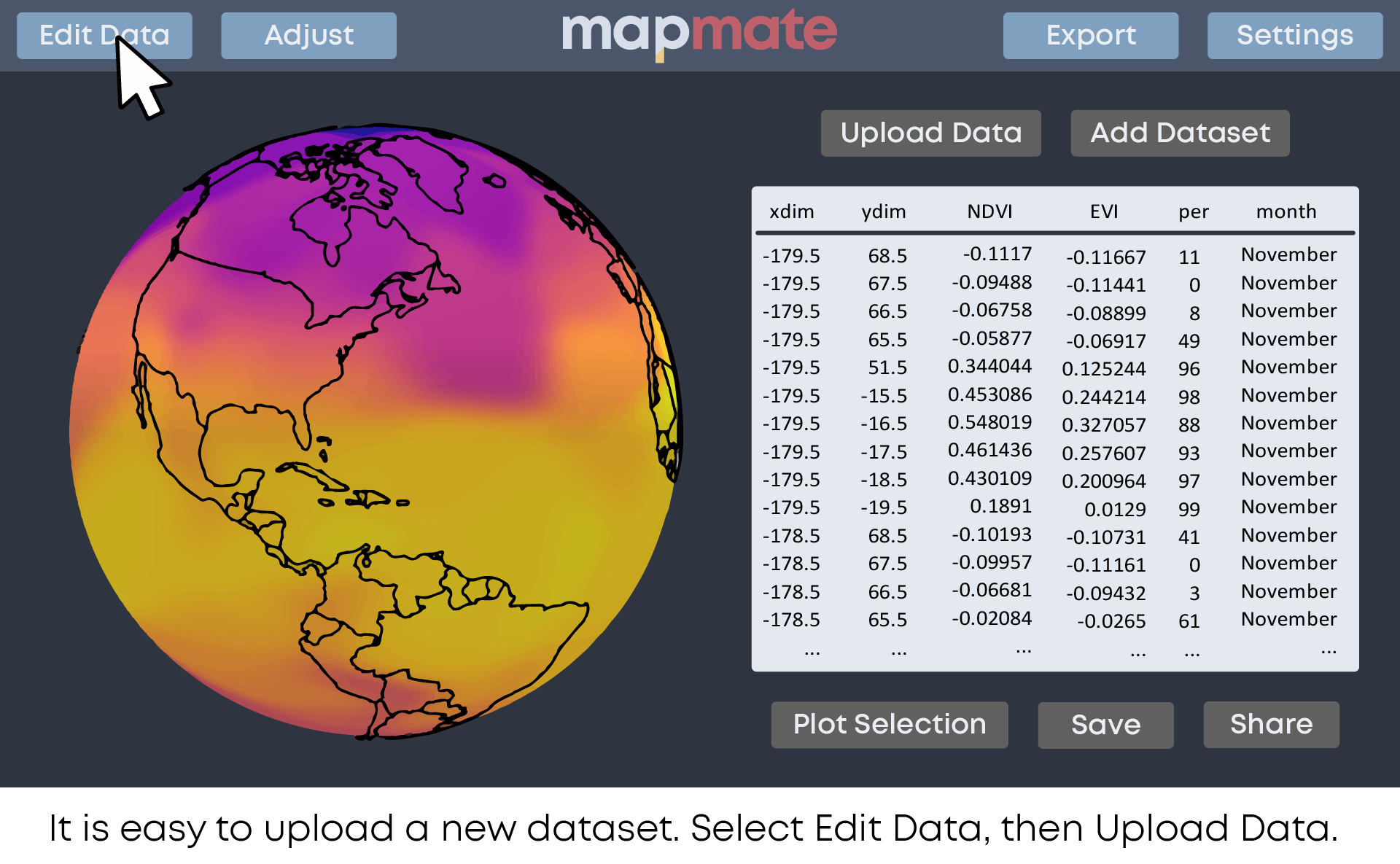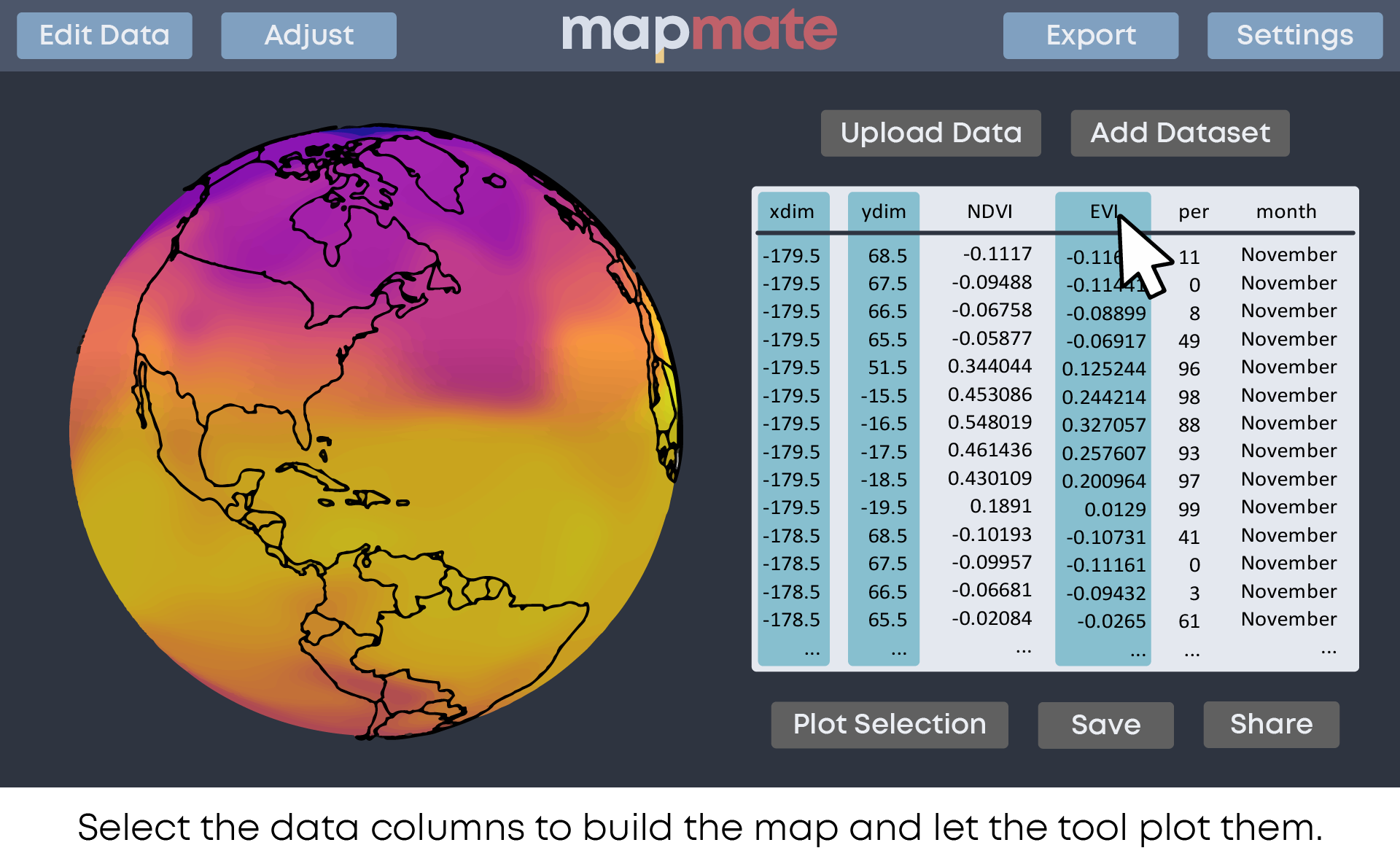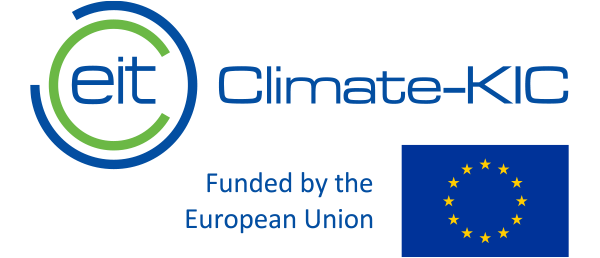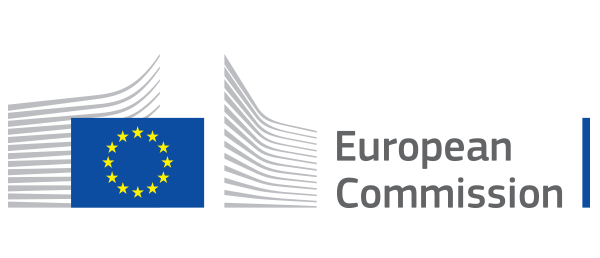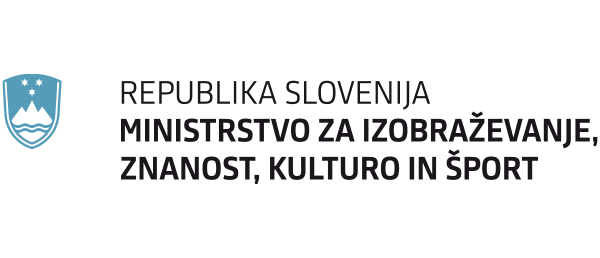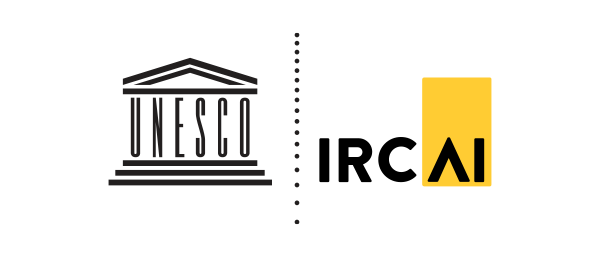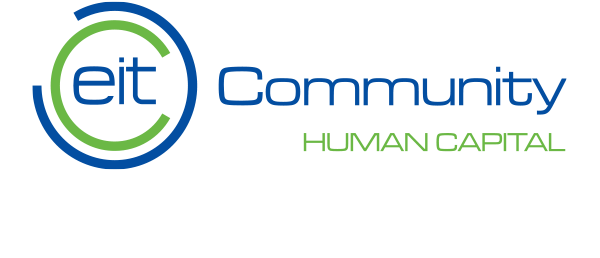
winner
MapMate – show me the world
MapMate is a global data visualisation tool for everyone.
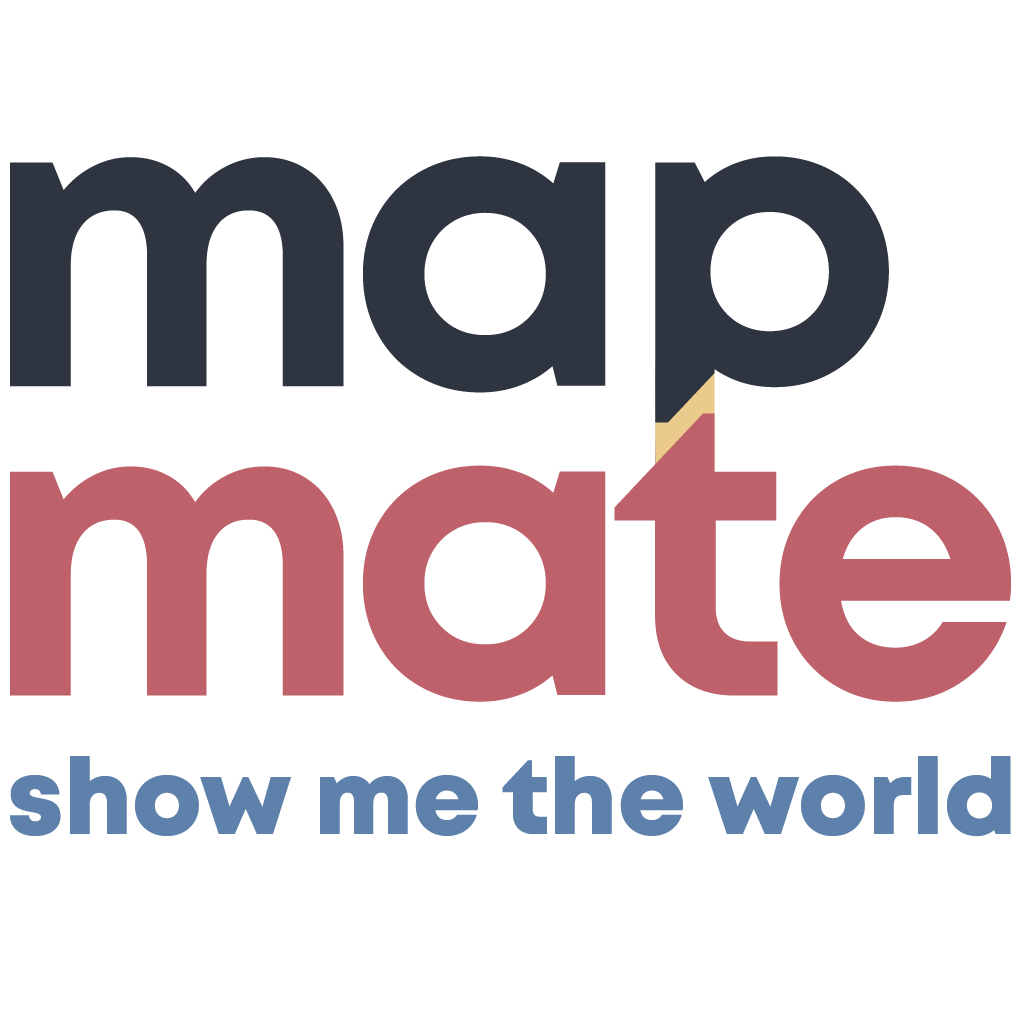
Team: MapMates
Team members
Franziska Hoerbst, Joshua Oliver Waites, Aoife HughesMembers roles and background
Joshua Waites is a PhD student working in the crop genetics department at the John Innes Centre. He is currently working on carotenoid biosynthesis and biofortification in wheat. He loves the intersection of where science meets art and is passionate about communicating complex scientific ideas in simple ways.
Aoife Hughes is a final year PhD student at the John Innes Centre, using computational modelling she studies how pathogens affect a plant’s ability to send signals between cells. She has previously worked on modelling crop yield with respect to changing environments and has published several peer-reviewed papers on wheat-drought stresses.
Franziska Hoerbst is a Computational and Systems Biology PhD student at the John Innes Centre in Norwich, UK. She is investigating long distance signalling and the internal communication system of plants using computational methods. After working in science communication for 2 years Franziska co-founded the climate science communication podcast 5mcc.
Contact details
Solution description
MapMate is a global data visualisation tool for everyone. With the growing abundance of global data sets, we need to think about how we can more easily communicate the information we are collecting, to everyone. The challenges humanity faces in this century can benefit immensely from an informed public. Hence there is a pressing need to utilise these datasets and make them accessible for the public, without financial and education barriers.
MapMate is a standalone tool which allows you to plot global data on an interactive globe plot to present and compare datasets, explore trends, and satisfy the thirst for knowledge of curious minds. It is made to reduce barriers and is therefore easy to use without any educational background in data science or visualisation. Additionally, it is fully Open Access and Open Source.
Solution context
The human brain is amazing. But it is bad at analysing data by looking at tables of numbers. Therefore, numerical data is processed and pressed into graphs and figures to make it easy to read and understand. This allows the mind to spot trends and draw comparisons from datasets that would otherwise be illegible more easily. However, for visualising complex spatial-temporal datasets, current tools are either behind a paywall or inaccessible to a user that does not have a background in data science and coding skills. This restricts the ability to spot patterns and draw conclusions from these multidimensional datasets. But in many cases, this data format contains the most important data for society: how deforestation has changed over time; how carbon emissions around the world have changed over time; micronutrient deficiency across the world; global air temperature across the world, etc.
Solution target group
MapMate is designed for those who love data visualisation, and for those who want to explore this love for data visualisation.
MapMate is designed for researchers working with global data as well as curious minds exploring numbers in their leisure time – without any prior knowledge on coding and data visualisation. It is easily accessible and easy to use.
Any spatial dataset can be presented on our beautiful globe and then implemented in websites, presentations or exported as images for any use.
Solution impact
We want MapMate to be as inclusive as possible to reach as many people as we can. Therefore, we are maximising its impact through offering it as a free tool that is easy to use and applicable to a wide range of uses.
We can monitor our impact by collecting data about MapMate in terms of clicks, downloads, retweets, citations and more. In that way, we are also able to adjust our roadmaps to meet the need of our users.
In our long-term vision, we imagine MapMate as a brilliant opportunity for citizen science projects as well. We believe that connecting the public to science works best when there are contributions from both sides. An example of where MapMate can do this would be where scientists hold hands-on research workshops where participants can collect data and then learn how to visualise their own data against other datasets. In this way the relationship between the public and science can be strengthened for better teamwork in the future.
Solution tweet text
MapMate is an easy-to-use open access data visualisation tool that helps process global datasets. Explore the earth’s temperature and vegetation or upload your own global dataset and enjoy the magic of graphical depiction.Solution innovativeness
Data visualisers are nothing new; however, what sets MapMate apart is its ease of use and ability to visualise any geospatial dataset. Existing tools are purpose built to visualise a specific kind of data, in limited formats with minimal customisation by the end-user. MapMate, is providing quick and easy visualisation and analysis without prior knowledge in data science or coding. With these tools many questions can easily be asked and visualised. For example, how is the surface temperature of the earth related to vegetation or is there a relationship between plant density and temperature change in a region?
In addition, we are strong believers in tools and software for science being transparent. Therefore, MapMate is fully open access, allowing users to download the software, learn how it works and modify it to their needs.
MapMate is the first of its kind to unite all these features in an open-source program that is accessible and usable without barriers.
Technical
Fundamentally, the software components are kept as simple as possible. To keep accessibility, we have made deliberate decisions to only use free and open-source libraries and data. To organise, filter and arrange data the “pandas” package is used, this converts input data into manageable tables. Mathematical calculations, such as converting between coordinate systems (e.g., Latitude, Longitude to Carteasian) is handled through numerical python, “numpy”. To handle user input a HTML and web framework “flask” has been prototyped, this will allow for simple graphical user interfaces in a web browser and dynamic plotting and analysis to be performed. For interactive plots and data visualisation, “plotly” has been used. Plotly, enables both mouse and keyboard, and touch enabled devices to interact with charts.
These software packages are easily installable on Windows, Mac and Linux computers and are completely free. The python programming language is often used to educate students in software development, and so all MapMate’s software has been written as simple and readable as possible to maximise its education value and allow others to reproduce results. Our commitment to openness in software and tools makes it easy for further modification, tweaks or even embedding into other systems. Produced results and figures are web documents, thus they can be viewed on any device with internet connectivity (computers, laptops, phones, tablets etc.). Providing these output files also removes the requirement of an internet connection and can be viewed “offline,” perfect for travelling or unstable internet access.
We encourage those interested to change, break, modify and tinker with what we have produced, therefore we have also provided complete instructions on how to reproduce all that we have created. Additionally, we welcome reports of errors, bugs, suggestions for improvements or contributions from anyone, on our GitHub page anyone can raise an issue and submit their comments.
Finally, for users who are purely interested in the end results we will provide a ready-to-use package which requires no technical knowledge to engage with.
Solution transferability
Transferability is the core idea of MapMate. Our roadmap for MapMate is split in two mayor routes we want to follow:
1 Educating about our data driven world
Just to name three major examples, the climate crisis, the pandemic and the ongoing mass extinction are big challenges that humanity is currently fighting. The only reason we know these problems exist is our eagerness to explore and quantify what happens around the globe.
All these challenges have the same thing in common, we need to work on them globally, and collect, discuss, and share our data across the world. Therefore, we think data visualisation – making numbers tangible – is crucial for successful knowledge transfer.
We want fact-based discussions. No nonsense.
MapMate can be used for any type of global data to fuel conversations from politics to geography to your personal travel index. Where have you been, where do you want to go next?
2 Learning important skills to be part of the data universe yourself
Data visualisation is tricky. But with a little bit of help, patience, practice, and inspiration from others, we can all learn how to do it!
For those who have already started looking into programming languages and data visualisation, we offer the opportunity to explore MapMate from inside its code. How are these maps produced? How can I make my own maps? How can I average my data to get a smooth, informative plot?
Find the answer to all these questions in our publicly available python code and contribute to MapMate yourself by adding more features of the endless possibilities' python offers.
Solution sustainability
Often tools and solutions which aim to assist in understanding and communicating climate (and other) changes are reactive or worse, static. The very nature of a changing climate demands that we produce adaptive solutions which can evolve to be what is needed precisely when it is needed. Therefore, our primary short-term goal is to share and involve the global community of data scientists, science communicators and the public, to reduce as many barriers to participation as possible. Major steps towards this have already been undertaken as the entire development of MapMate is tracked and easily available online (https://github.com/AoifeHughes/MapMate/).
In developing these tools, we have made use of established and trusted technologies, we have used the Python programming language, HTML and the plotly graphing system. These building blocks of MapMate follow a similar philosophy of openness and collaboration, which only further enables contributions from the wider community.
With engagement from our audience, we will be able to rapidly assess where tweaks and changes are needed, what additions should be made and where efforts in continuing development will be best spent.
Currently, our next steps are to improve the user interface of our framework, we have implemented a wealth of developer and data-science tools as well as visualisations but need to do more to make these usable without prior skills or knowledge of software.
To further increase the access and use of these tools and visualisations we have planned a simple and easy to use web interface where users can upload any data they choose and visualise it on a world map. To engage on a more local level we are currently prototyping choropleth (region-based maps) functionality. This will enable a multitude of engagement activities e.g. a school could have students collect temperature readings at home and a teacher would create a lesson using MapMate to discuss the readings and variability on a local scale.
Building on these ideas we envision that citizen science could play a significant role in MapMate’s future. Whilst all examples we have produced thus far are using established data, a system could be devised to allow contributions from anyone. As MapMate is not limited to temperature or climate data these citizen science data collections could be any spatial (or spatial-temporal) data.
Finally, as many sets of data do already exist which may be suitable for analysing with MapMate we will improve our systems for standardising, normalising, and comparing data from multiple sources
Solution team work
We are a team of three PhD students at a plant science research institute called the John Innes Centre in Norwich, UK. The past year we have spent our lunch breaks together chatting about our different projects in the fields of plant pathogen interactions, future crop development, and internal plant signalling systems. We share a passion for communicating science in a simple manner to open the world of science to everyone and reach the widest audience possible. DigiEduHack gave us an opportunity to start working on a collaborative project under this shared vision. We as scientists have already explored ourselves that data science is fun, we want to spread the word and show it to everyone.
Downloads
Links
* Climate-KIC publishes the proposed solutions developed during the DigiEduHack event solely for the purposes of facilitating public access to the information concerning ideas and shall not be liable regarding any intellectual property or other rights that might be claimed to pertain to the implementation or use any of the proposed solutions shared on its website neither does it represent that it has made any effort to identify any such rights. Climate-KIC cannot guarantee that the text of the proposed solution is an exact reproduction of the proposed solution. This database is general in character and where you want to use and develop a proposed solution further, this is permitted provided that you acknowledge the source and the team which worked on the solution by using the team’s name indicated on the website.



